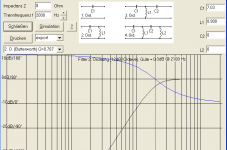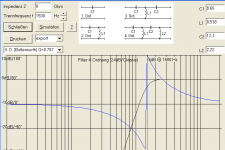Has anyone tried either of these models?
DT-300
DT-101SK
I used the dt300 it is a fine 28mm tweeter. And for sure when you look at the low price. And there is a wave guide available WG300 to increase efficiency to 95dB.
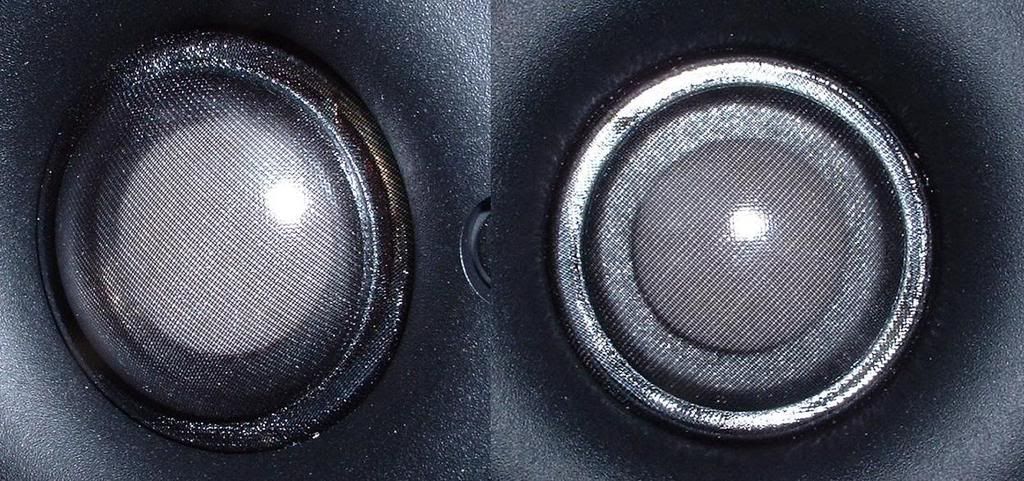
http://www.diyaudio.com/forums/multi-way/137036-big-bandpass-fatboy.html
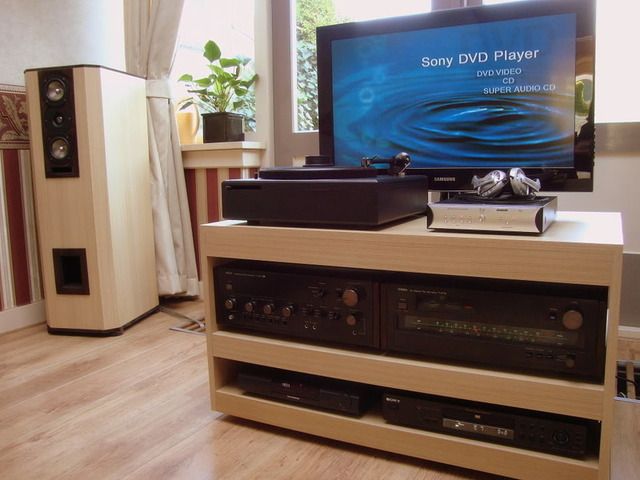
Last edited:
measurements. The monacor is better then the vifa and seas tweeters he tested on harmonics.
Wave guides & horns
Wave guides & horns
An externally hosted image should be here but it was not working when we last tested it.
Last edited:
The monacor is better then the vifa and seas tweeters he tested on harmonics.
Hi, Looking at the results I wouldn't say that at all, rgds, sreten.
Hi all,
I've ordered some DT-300s to try. I looked at the waveguide, but I'm not clear about the advantage. For example, if a bass-mid is say 88-90 db efficient, and the tweeter is boosted to 95, then wouldn't we need to cut that back again using more resistance? Forgive my ignorance. Does it do something else, in addition to the boost?
I've ordered some DT-300s to try. I looked at the waveguide, but I'm not clear about the advantage. For example, if a bass-mid is say 88-90 db efficient, and the tweeter is boosted to 95, then wouldn't we need to cut that back again using more resistance? Forgive my ignorance. Does it do something else, in addition to the boost?
Hi all,
I've ordered some DT-300s to try. I looked at the waveguide, but I'm not clear about the advantage. For example, if a bass-mid is say 88-90 db efficient, and the tweeter is boosted to 95, then wouldn't we need to cut that back again using more resistance? Forgive my ignorance. Does it do something else, in addition to the boost?
It gives you efficiency on lower end making the tweeter have to work less to move the same amount of air. But secondly and as far as I see much more important is that it controls directivity.
2 inch Dome tweeters and especially soft dome tweeters have extremely good off axis response at below ~ 3-5 khz and then by 10 khz the response drops to very poor off axis.
A waveguide would restrict directivity on lower end, which is good since then it can mate better with a cone woofer which doesn't have that off axis bloom on the top end. It would also make off axis response much more coherent and it would improve high frequency off axis response.
To explain further lets look at these pictues I shamelessly stole from Zaph =)
Standard dome:

Waveguided dome:
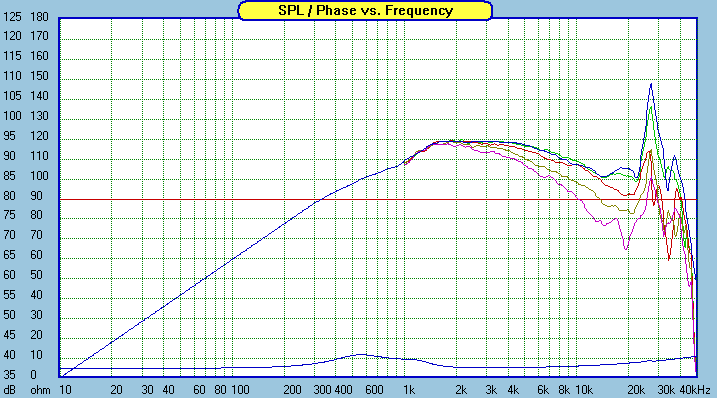
The waveguide dome is also a metal dome though so expect DT300 to have slightly worse off axis response on top end but the pictures should show the general idea =)
The waveguide also helps with time alignment ie getting tweeter and woofer voice coils closer to each other in the vertical plane.
Youre right only the vifa has higher second harmonic. they all are very good at 90dB. -60dB =0,1%Hi, Looking at the results I wouldn't say that at all, rgds, sreten.
monacor
An externally hosted image should be here but it was not working when we last tested it.
seas
An externally hosted image should be here but it was not working when we last tested it.
vifa
An externally hosted image should be here but it was not working when we last tested it.
Last edited:
Then I should probably get the waveguides for the DT-300. Are there any issues mounting the tweeter very close to a small diameter bass-mid: magnetic interactions, or one coil interfering with the other? I ask this because I have noticed that some speakers have the drive units bunched close together, while others have large gaps between them.
Then I should probably get the waveguides for the DT-300. Are there any issues mounting the tweeter very close to a small diameter bass-mid: magnetic interactions, or one coil interfering with the other? I ask this because I have noticed that some speakers have the drive units bunched close together, while others have large gaps between them.
Cross the dt300 with wave guide at 2kHz this is within its range and better for ctc spacing to have larger wave length. 2kHz = 17cm beter to get ctc below this 17cm.
Wave guide is also good for vertical alignment of the radiators because it lays deeper in the baffle.
Last edited:
I think Troels Gravesen build some speakers with the DT300 waveguide.
Seems you can rout them without cracking, this would get them a centimetre or two closer to the woofer.
Seems you can rout them without cracking, this would get them a centimetre or two closer to the woofer.
I've got a quick question about the DT 300.
Moncaor say that you should run a 12dB/Oct high pass filter at 2Khz with this tweeter.
Would I be safe running a 24dB/Oct high pass filter at 1.5Khz at all?
I find this will allow me to mount the drivers further apart if I can get away with 1.5Khz.
Moncaor say that you should run a 12dB/Oct high pass filter at 2Khz with this tweeter.
Would I be safe running a 24dB/Oct high pass filter at 1.5Khz at all?
I find this will allow me to mount the drivers further apart if I can get away with 1.5Khz.
See the spl in the graphics 4 order shout be easier for the driver.I've got a quick question about the DT 300.
Moncaor say that you should run a 12dB/Oct high pass filter at 2Khz with this tweeter.
Would I be safe running a 24dB/Oct high pass filter at 1.5Khz at all?
I find this will allow me to mount the drivers further apart if I can get away with 1.5Khz.
2 order -12dB 1kHz -18dB 800hz
4 order -13dB 1khz -22dB 800hz
Attachments
Last edited:
See the spl in the graphics 4 order shout be easier for the driver.
2 order -12dB 1kHz -18dB 800hz
4 order -13dB 1khz -22dB 800hz
Thanks.
I forgot to mention that I'm using an L-R filter as opposed to a butterworth filter, but even so by the looks of it I should be fine with 1.5Khz high pass. 🙂
L-R should be better than Butterworth for your tweeter.
L-R crosses over at the -6dB point while Butterworth crosses at -3dB.
I assume you are going active since a 24dB L-R consists of two cascaded 12dB Butterworths which I think is not possible to do passive but I could be relying on incorrect info here.
L-R crosses over at the -6dB point while Butterworth crosses at -3dB.
I assume you are going active since a 24dB L-R consists of two cascaded 12dB Butterworths which I think is not possible to do passive but I could be relying on incorrect info here.
L-R should be better than Butterworth for your tweeter.
L-R crosses over at the -6dB point while Butterworth crosses at -3dB.
I assume you are going active since a 24dB L-R consists of two cascaded 12dB Butterworths which I think is not possible to do passive but I could be relying on incorrect info here.
Yep I'm running an active setup, using a modded DCX2496 as my crossover so I can easily adjust crossover point. I'm also experimenting with placement of he tweeter as it's better to place the tweeter as close as possible to the woofer.


The yogurt pots are temporary enclosures for now

I'm tempted to go for some Ikea bowls, but I'm not really sure how well they'll play with the waveguide.
Right now the distance between the center of my voicecoils is around 190mm, which more than 1 wavelength at 2Khz (~172mm), but below 1 wavelength at 1.5kHz (~229mm), so using a lower XO point gives me more room to experiment with tweeter placement and also different types of enclosure.
As for the sound, I like the sound of this tweeter, and I find a +6db/oct boost from 4Khz and up adds a nice bit of extra sparkle to the sound. 🙂
If you go up to 48dB L-R you might be able to cross the tweeter a bit lower still without frying it. Although how low exactly I dare not guess, it'll depend on how radical you are with the volume control.
Thanks, once my tweeter protection caps arrive I'm going to try experimenting more with a lower XO point and 48db slope. 🙂
I'm usually pretty careful with the volume, my listening position is usually less than 1 metre so I don't need a lot of SPL.
I'm usually pretty careful with the volume, my listening position is usually less than 1 metre so I don't need a lot of SPL.
- Status
- Not open for further replies.
- Home
- Loudspeakers
- Multi-Way
- Monacor tweeters
